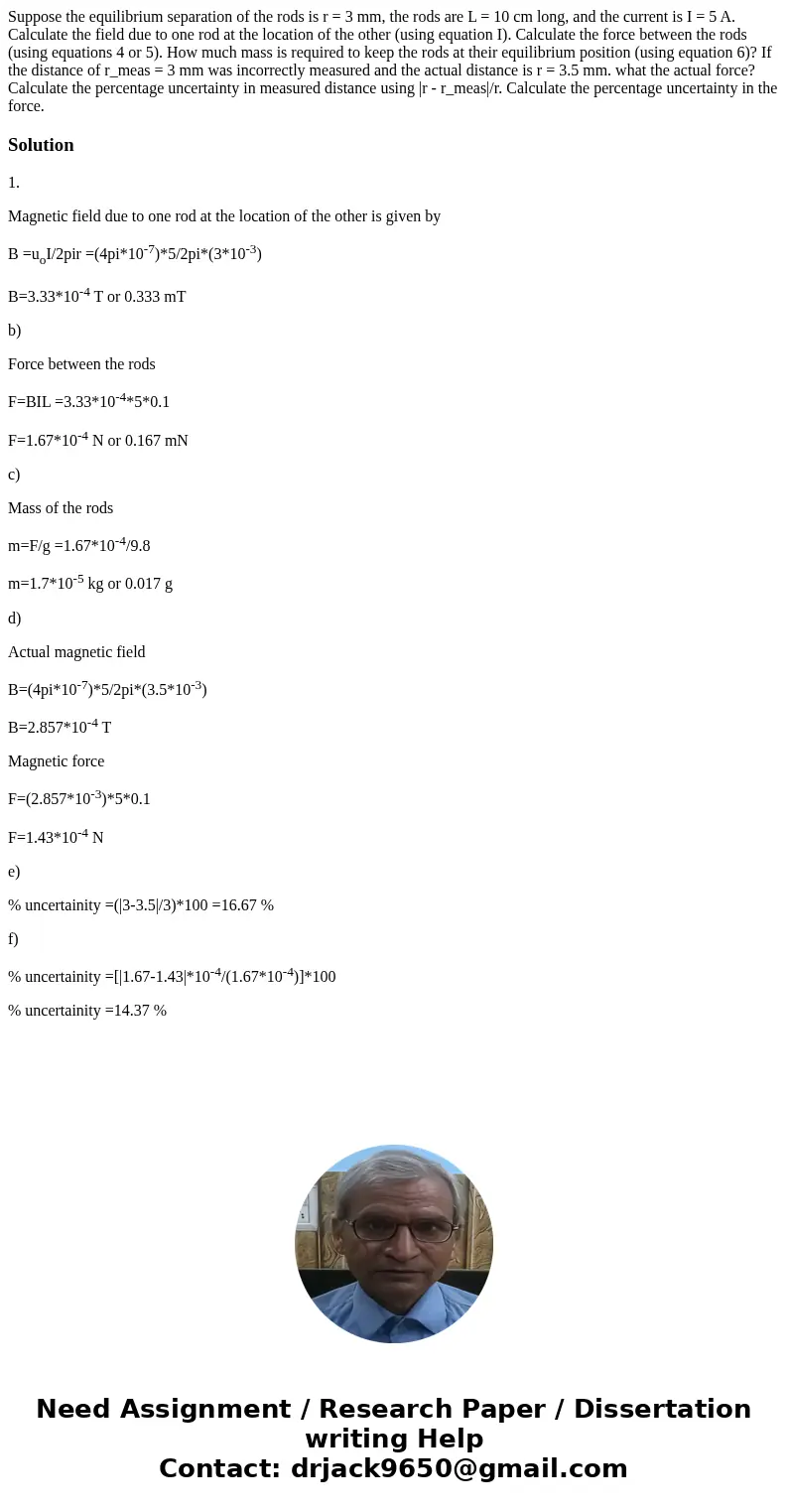Suppose the equilibrium separation of the rods is r 3 mm th
Suppose the equilibrium separation of the rods is r = 3 mm, the rods are L = 10 cm long, and the current is I = 5 A. Calculate the field due to one rod at the location of the other (using equation I). Calculate the force between the rods (using equations 4 or 5). How much mass is required to keep the rods at their equilibrium position (using equation 6)? If the distance of r_meas = 3 mm was incorrectly measured and the actual distance is r = 3.5 mm. what the actual force? Calculate the percentage uncertainty in measured distance using |r - r_meas|/r. Calculate the percentage uncertainty in the force.
Solution
1.
Magnetic field due to one rod at the location of the other is given by
B =uoI/2pir =(4pi*10-7)*5/2pi*(3*10-3)
B=3.33*10-4 T or 0.333 mT
b)
Force between the rods
F=BIL =3.33*10-4*5*0.1
F=1.67*10-4 N or 0.167 mN
c)
Mass of the rods
m=F/g =1.67*10-4/9.8
m=1.7*10-5 kg or 0.017 g
d)
Actual magnetic field
B=(4pi*10-7)*5/2pi*(3.5*10-3)
B=2.857*10-4 T
Magnetic force
F=(2.857*10-3)*5*0.1
F=1.43*10-4 N
e)
% uncertainity =(|3-3.5|/3)*100 =16.67 %
f)
% uncertainity =[|1.67-1.43|*10-4/(1.67*10-4)]*100
% uncertainity =14.37 %

 Homework Sourse
Homework Sourse